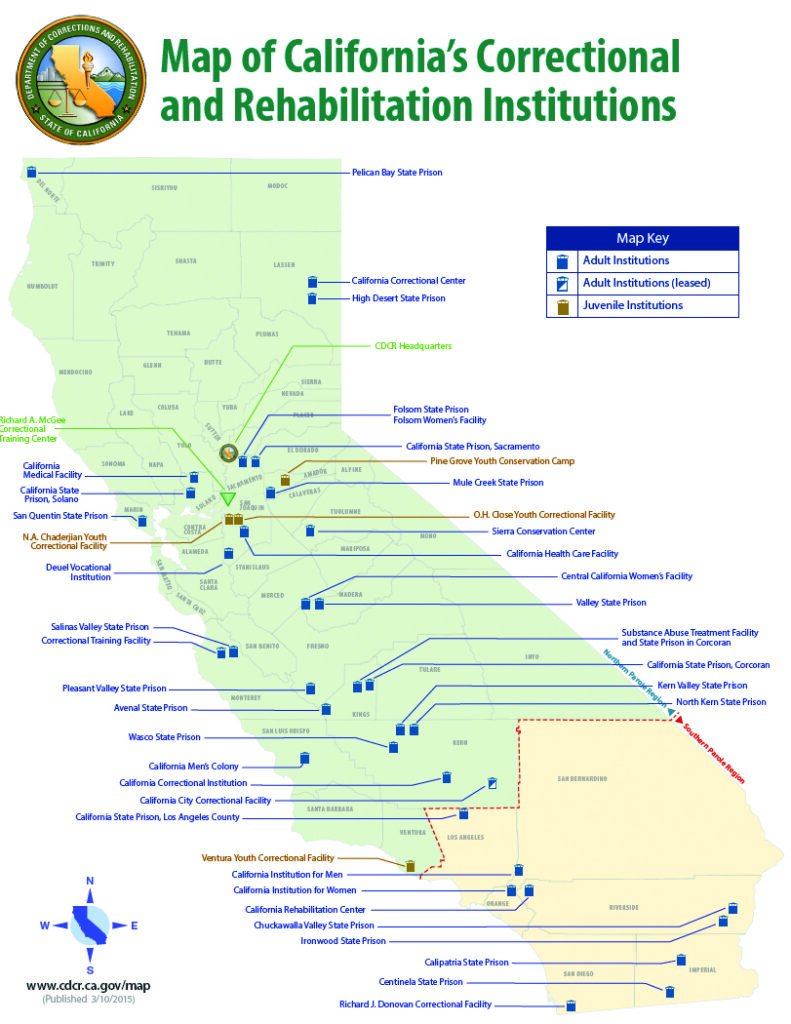CDCR’s objective is to provide better access to programs, reentry, support

Beginning Jan. 1 of this year, the California Department of Corrections and Rehabilitation shook up its leadership structure. Henceforth, the 32 institutions will be grouped into one of four regions, overseen by four regional leaders and their team.
The objective of the reorganization is to provide residents with better access to programs, reentry opportunities, mental-health support, improved safety and security, and more accountability by all the people involved, according to the CDCR website.
“We’ll be able to work together with the healthcare and rehabilitation regional leaders,” said acting Associate Director Byran Phillips. “To make this successful, it takes a team.”
Providing residents with access to education, vocational training, substance use treatment, and mental health support are important pieces of the overall plan to lower the recidivism rate. One way to accomplish this task is by creating tailored programs that address the needs of facility-specific populations.
Delays, such as temporary disruptions in program delivery and access to services are commonplace with large projects such as this. CDCR’s goal for the four regions is to tailor programs to be region-specific. This will ensure programs and services are relevant, but they could vary depending on the facility, said CDCR website.
The reorganization will create a more rehabilitative-focused correctional system that prioritizes individual growth, safety, and successful reintegration, according to CDCR. The approach aligns with the broader effort to reduce recidivism, improve public safety, and enhance the well-being of incarcerated individuals. The website provided these details of the plan:
The plan includes changing how healthcare is coordinated. The regional healthcare teams will collaborate with the Division of Adult institutions and California Correctional Health Care Services to ensure residents receive medical and mental health services in a timely and consistent manner.
The leadership teams will be responsible for ensuring that individuals in prisons have access to opportunities, regardless of their prison’s location. CDCR is improving its data-driven performance metrics to ensure that gaps and inequities are eliminated and decisions are made based on evidence.
The report said that improving safety and security is important for staff, administrators, and the incarcerated population. Collaborating with program coordinators will ensure that environments are conducive to safety and rehabilitation at each facility. The new leadership teams will supervise the distribution of staff and resources to facilities as needed.
“By [spreading out] leadership and emphasizing regional oversight, the California Department of Corrections and Rehabilitation aims to improve the delivery of services and programs, ultimately benefiting the incarcerated individuals,” the announcement said.
The four regions and their respective institutions are:
Region I: Sacramento
- Folsom State Prison
- California State Prison, Sacramento
- High Desert State Prison
- Pelican Bay State Prison
- Mule Creek State Prison
- Sierra Conservation Center
- California State Prison, Solano
- San Quentin Rehabilitation Center
Region II: Fresno
- Central California Women’s Facility
- Valley State Prison
- Salinas Valley State Prison
- Correctional Training Facility
- California Health Care Facility
- California Medical Facility
- California Institution for Women
Region III: Bakersfield
- California State Prison, Corcoran
- Substance Abuse Treatment Facility
- Avenal State Prison
- California Men’s Colony
- Kern Valley State Prison
- North Kern State Prison
- Pleasant Valley State Prison
- Wasco State Prison
Region IV: Rancho Cucamonga
- Richard J. Donovan Correctional Facility
- Calipatria State Prison
- California Correctional Institution
- Centinela State Prison
- California Institution for Men
- California Rehabilitation Center
- Ironwood State Prison
- California State Prison, Los Angeles County